The project at a glance
What if you had to help rebuild a nation—where every choice could unite or divide?
Peacebuilders operate in fragile environments where trust is broken, resources are scarce, and every decision has lasting consequences. Yet, traditional training methods fail to prepare them for the unpredictability and emotional complexity of their work.
When the PeaceNexus Foundation recognized this gap, they partnered with us to create a new kind of training: an immersive, interactive simulation that mirrors the real-world challenges of peacebuilding.
Through a deeply collaborative process, we co-created Mission Zhobia: Winning the Peace, a simulation that allows practitioners to navigate crises, rebuild trust, and develop the strategic and emotional intelligence needed to lead under pressure. Today, it is used globally as a trusted learning tool, helping peacebuilders master the art of conflict resolution.
Want to explore how interactive simulations can transform your training programs? Let's start a conversation.
Our process: from challenge to solution
Understanding the core challenge
Peacebuilding is more than policy—it’s about people. Practitioners must navigate incomplete information, competing priorities, and fragile alliances while working in regions where public institutions are barely functioning. Missteps can have devastating consequences, yet traditional training tools fail to prepare them for the emotional and strategic pressures of the field.
Without empathy-driven, hands-on training, peacebuilders risk making decisions that deepen divisions rather than mend them. The PeaceNexus Foundation recognized this urgent gap—and rather than seeking incremental improvements, they aimed to reimagine how peacebuilders learn, making training as dynamic and impactful as the work itself.
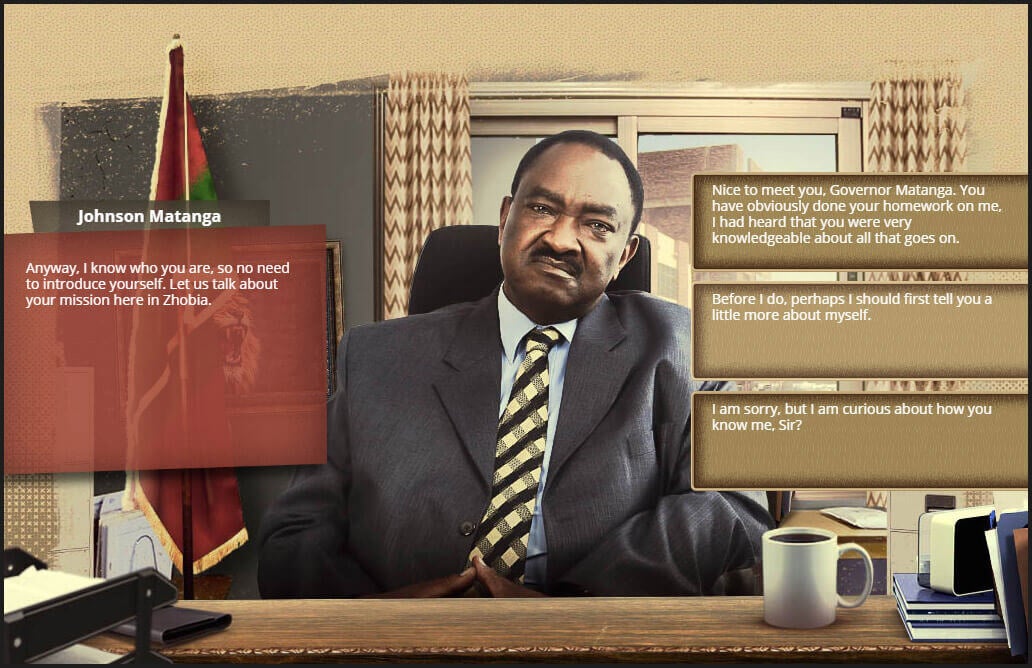
Co-creating an authentic experience
From the start, we led PeaceNexus and their partners through a collaborative, iterative process to create a training experience that felt authentic, high-stakes, and emotionally engaging.
Through workshops, strategic guidance, and deep dives into peacebuilding, we helped define the essential skills practitioners need—not just in governance and policy, but in emotional intelligence, adaptability, and crisis leadership.
As we moved into design and development, early prototypes revealed gaps in complexity. We worked closely with PeaceNexus to deepen scenarios, refine gameplay, and sharpen decision-making mechanics—ensuring every choice carried real-world consequences.
The result? Mission Zhobia: Winning the Peace—a trusted, interactive simulation that equips peacebuilders to lead with confidence in the world’s most fragile environments.
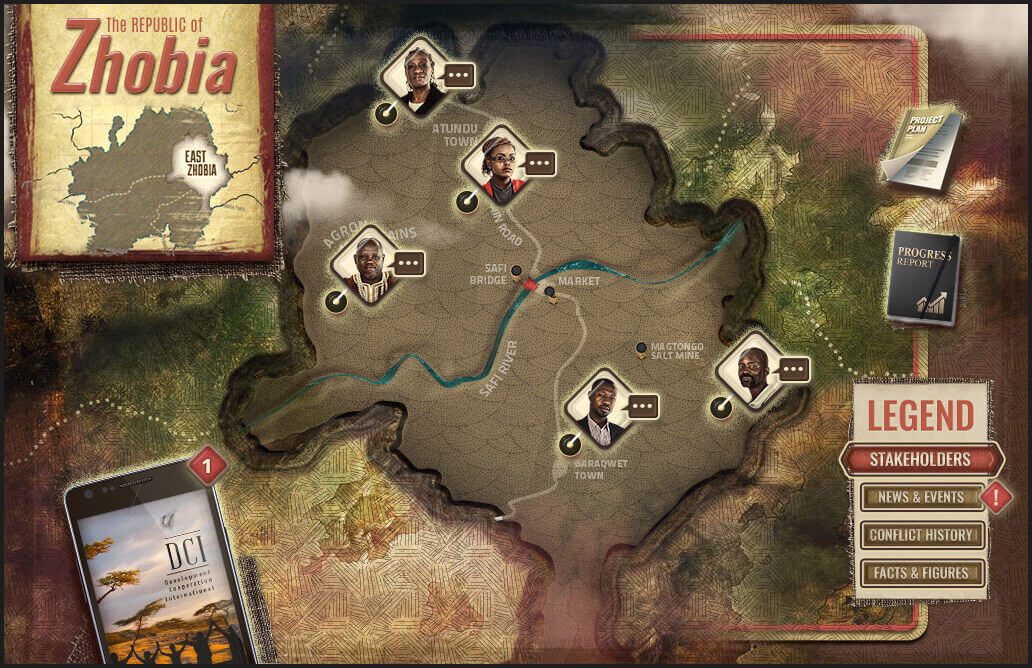
Our solution: an interactive and immersive simulation for the complex reality of peacebuilding
In Mission Zhobia: Winning the Peace, learners step into the role of a decision-maker in a fictional country recovering from crisis. Every choice impacts the stability of the region—and there’s rarely a “perfect” solution.
Key features:
- Immersive, real-world dilemmas: Players must rebuild trust, mediate disputes, and make tough calls, like deciding where to build a courthouse or how to restore public trust.
- Ripple effects: Every decision ripples through the game’s branching narrative, teaching players how their actions shape long-term outcomes.
- Empathy in action: By interacting with diverse characters, players see conflict through multiple perspectives, learning that peace requires more than technical expertise—it demands human connection.
- Safe learning environment: With 23 possible outcomes to the game, we gave peacebuilders the freedom to try, fail, and improve—all without real-world risks.
Curious to experience it firsthand? Try the simulation – it's open to everyone!
The impact
From training tool to a trusted companion in the field
Since its launch in 2017, Mission Zhobia has become a valuable training tool, helping peacebuilders develop the skills needed to navigate post-conflict environments. Some of the key results are:
Adopted by leading institutions
Used as a training resource by global institutions, such as the United States Institute of Peace (USIP),
Global Reach
Used in 5+ countries around the world, ensuring diverse access to cutting-edge training.
Recognized by leaders
Recognized and endorsed by senior leaders within the UN, EU, and international peacebuilding institutions.
As a supporter of innovative learning, I believe Mission Zhobia will help us build strong rule of law institutions in conflict-affected countries.
Dmitry Titov
Former UN Assistant Secretary-General for Rule of Law
Where we are now
Contuining to learn and improve
Our work on Mission Zhobia didn’t stop at launch. We continue to analyze, refine, and improve the experience, ensuring it remains a powerful tool for peacebuilding training. By studying how players interact with the game, we gather insights that shape future iterations and expand empathy-driven learning experiences.
To explore its impact, we also teamed up with academic researchers to study how interactive learning experiences like Mission Zhobia can represent complex peacebuilding dynamics. The study validated the game’s potential as a learning tool and highlighted the importance of collaborating between the creative industry and academia to refine interactive training methods.
Explore our research findings here: Mission Zhobia Effectiveness Study
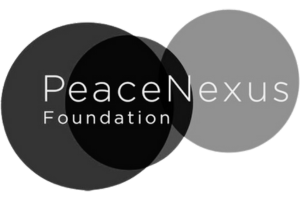
Services we provided:
- Guided the client from vision to execution
- Designed and developed a dynamic simulation with a branching scenario
- Produced high-quality media assets
- Integrated analytics and player insights
Inspired by Mission Zhobia? Let's discuss how we can build your custom game-based solution.
Other case studies
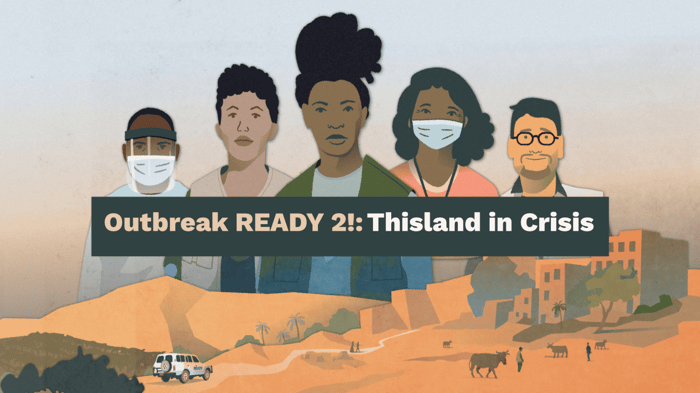
Case study
Training for the unthinkable: how READY prepares NGOs for outbreaks with a innovative simulation
Full Case Study

Case study
Leveling up leadership: how Just Eat Takeaway upskilled thousands through serious play
Full Case Study
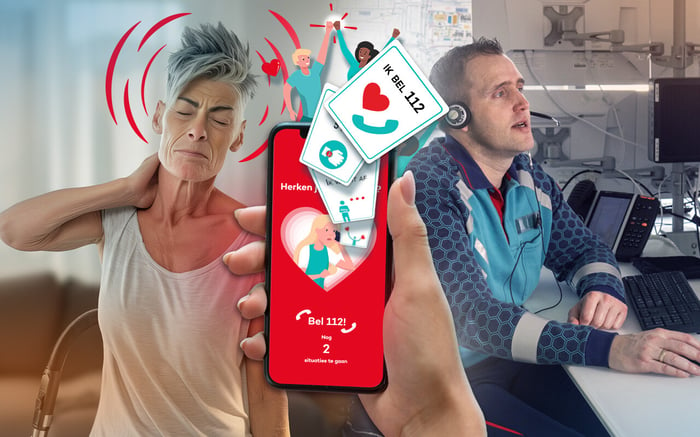
Case study
Five minutes to confidence: how the Dutch Heart Foundation turned bystanders into lifesavers
Full Case Study
